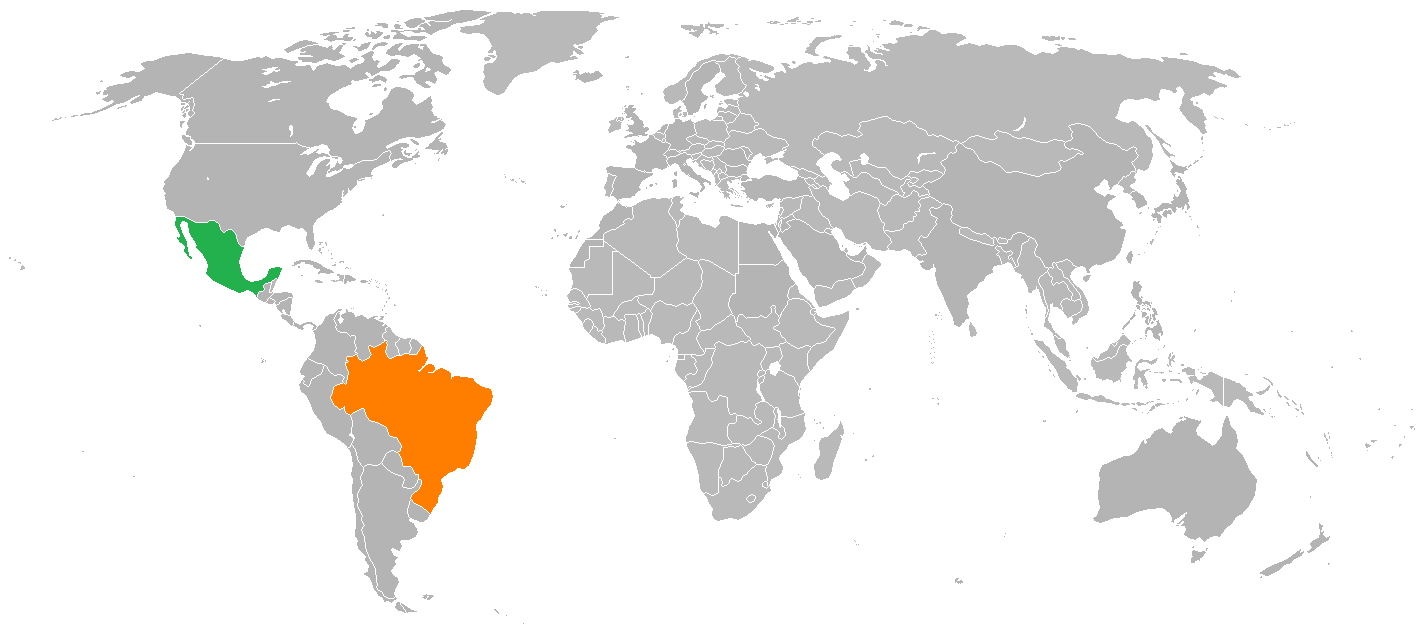RIO DE JANEIRO, BRAZIL – Mexico‘s Gross Domestic Product retreated 0.1% in the fourth quarter of 2021, according to preliminary seasonally adjusted figures released Monday by the statistics institute, INEGI. The drop was less than the 0.3% contraction expected in a Reuters poll and the 0.4% decline in the immediately preceding period.
However, after posting two consecutive quarters of decline, Latin America’s second-largest economy entered what is known as a “technical recession”. It thus joined Brazil, the regional leader, which entered recession in the second quarter of 2021.
Thus, the two Latin American giants now find themselves in similar situations, despite following opposed policies to deal with the pandemic.

On the one hand, Brazil disbursed more cash than most emerging economies to cope with the crisis and more than many rich economies, with 12% of GDP allocated to stimulus measures, according to IMF data, which translated into a historic budget deficit.
On the other hand, Mexico kept public spending so tight that even Wall Street economists, who usually praise fiscal prudence, called for an increase. Excluding interest payments, the government came close to balancing its budget in both 2020 and 2021.
However, both countries ended up with stagnant economies and little sign of growth shortly, a familiar outcome in Latin America, which was already lagging globally in the decades before the pandemic and now finds itself harder hit than most because of Covid-19.
SYNCHRONIZED RECESSION
“Both economies now face a synchronized recession, reflecting a combination of supply-chain problems, local rate hikes, political uncertainty, and structural problems,” said Adriana Dupita of Bloomberg Economics.
That’s not to say there are no differences. Brazil’s strong spending triggered a much faster recovery. The economy contracted 3.9% in 2020, a relatively manageable decline, and by March of last year, it had more than made up for that loss. Meanwhile, the government’s pandemic programs, including cash transfers to low-income households, succeeded in reducing poverty, briefly, to near historic lows.
By contrast, Mexico contracted by more than 8% in 2020 and is not expected to return to pre-pandemic output levels until 2023. It now has about 4 million more people living in poverty than in 2018.
But Brazil’s growth slowed when the fiscal stimulus was withdrawn last year as the central bank embarked on the world’s most aggressive monetary tightening. It raised the benchmark rate by 725 basis points to curb inflation, which topped 10%, partly driven by government spending. Another 150-point hike is expected this week.
President Jair Bolsonaro, up for re-election in October, has begun another round of cash transfers. But with monetary policy now pushing in the opposite direction, those measures are not expected to boost growth much above zero for the rest of this year.
Some analysts say the spending aims to secure political support rather than shoring up the economy’s potential by addressing its long-term weaknesses.
POLITICAL SURVIVAL
“It’s either political survival or populism,” said Barbara Fritz, professor of economics at the Latin American Institute of the Free University of Berlin. “There are no measures like industrial policies, investment promotion, or government downsizing.”
Mexico’s President Andres Manuel Lopez Obrador, who criticizes neoliberalism daily in his morning press conferences, says his pandemic austerity will eventually pay off.
He argues that keeping the country’s debt burden low will ensure that Mexico avoids diverting too many resources to interest payments instead of social programs.
The national debt is about 60% of GDP, according to IMF figures, compared to about 90% in Brazil. Mexico’s central bank has not had to raise interest rates as aggressively as Brazil’s because inflation has not shot up as sharply.
It is still unclear whether much of a dividend will be seen in growth. The IMF expects Mexico’s economy to expand 2.8% this year, well below the 4.8% average for emerging markets.

